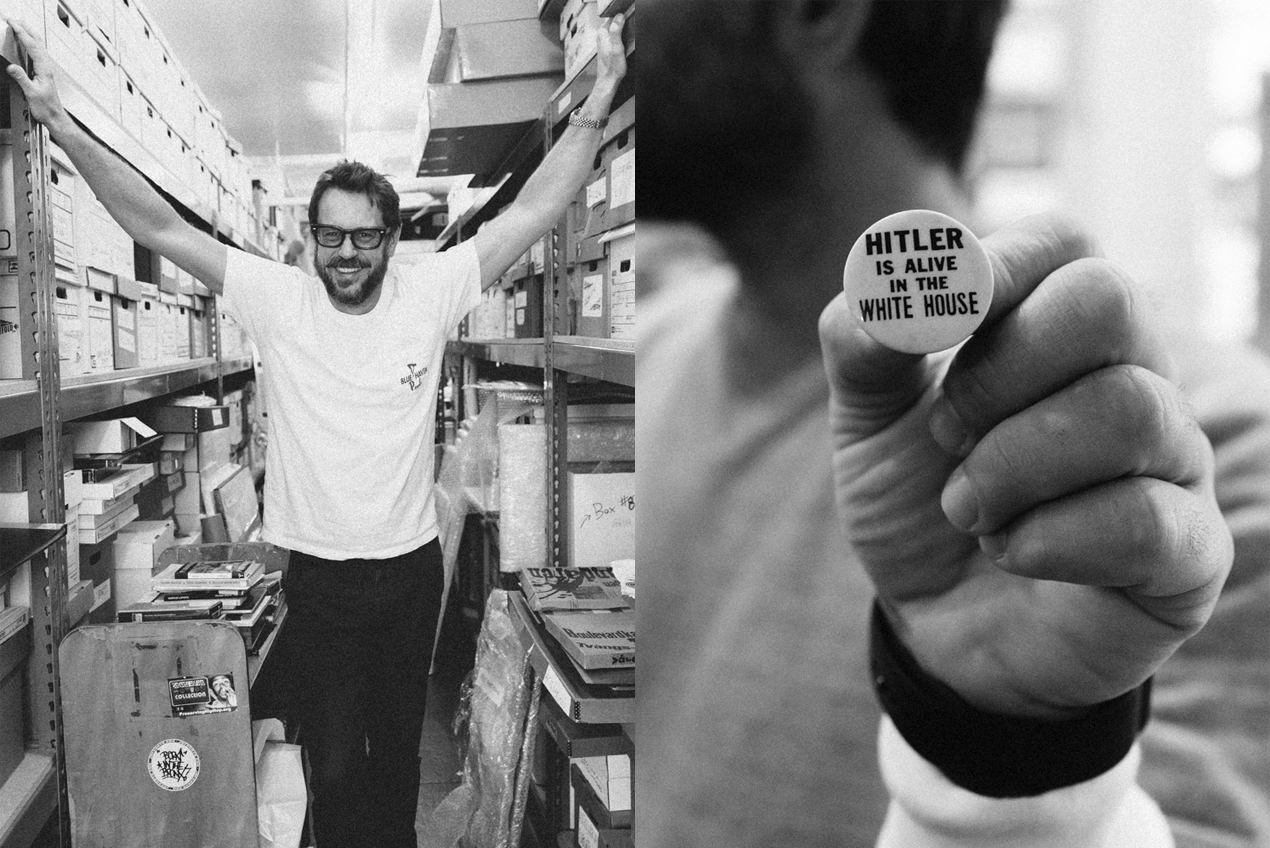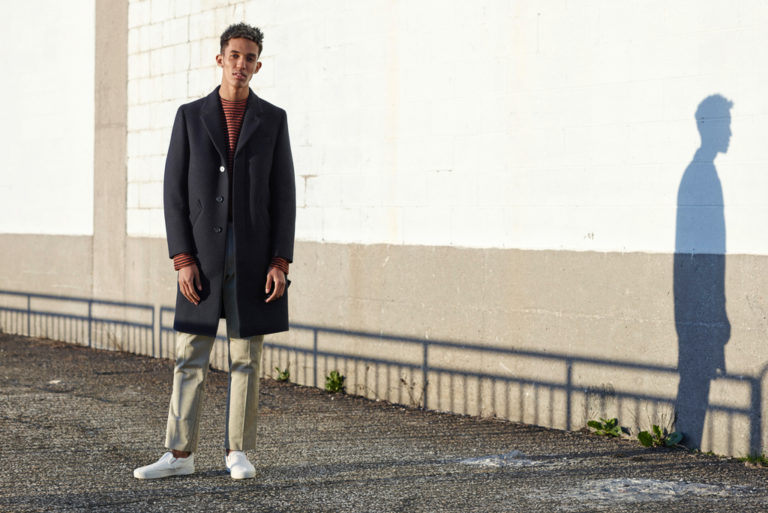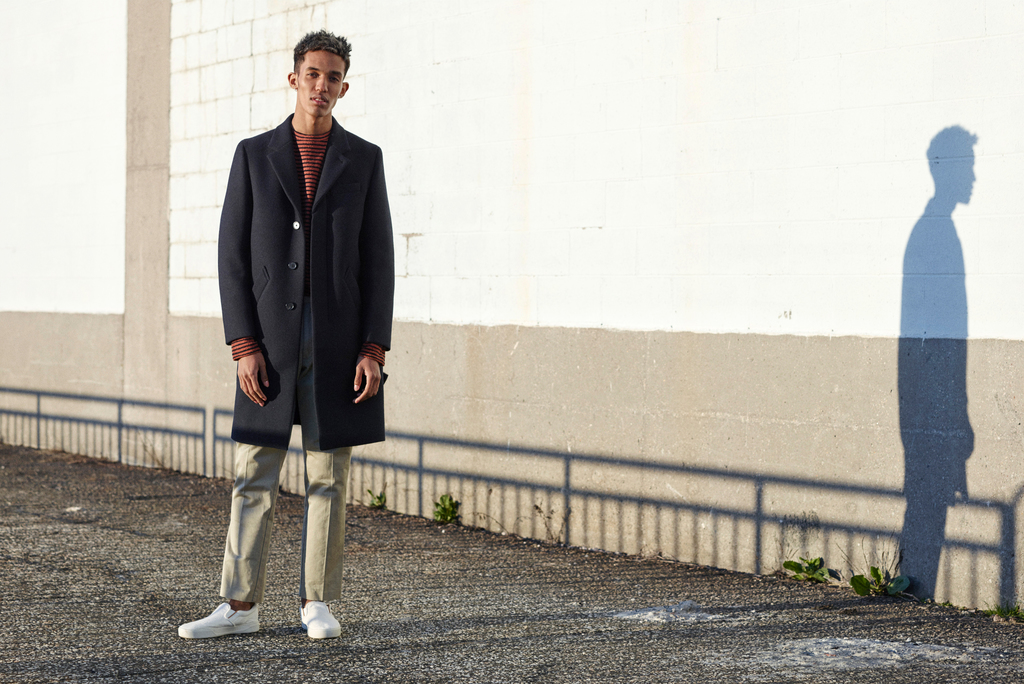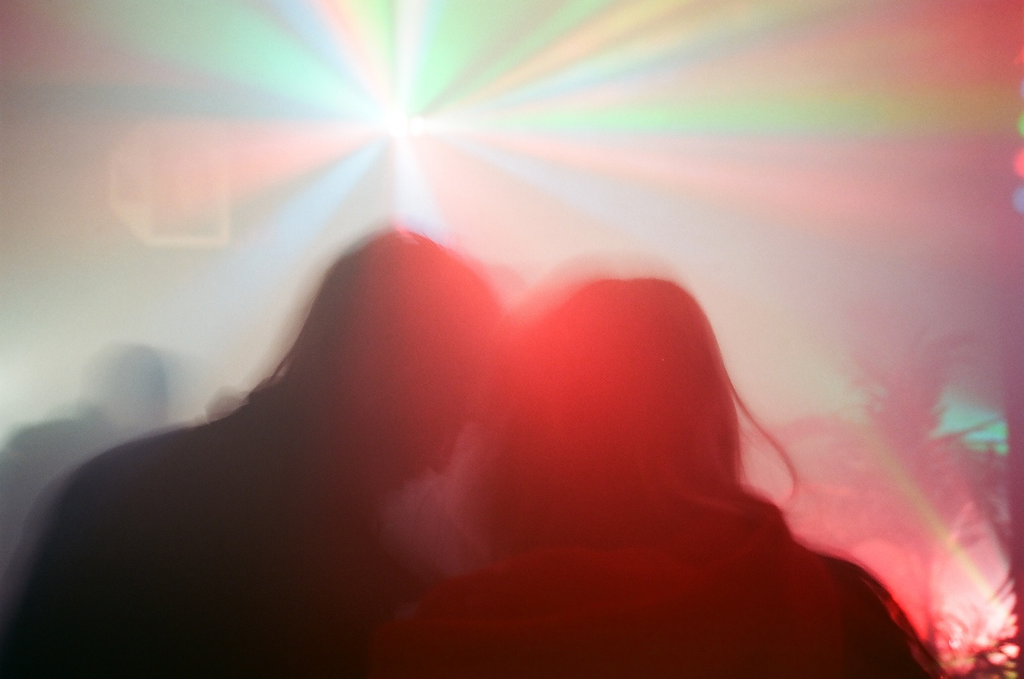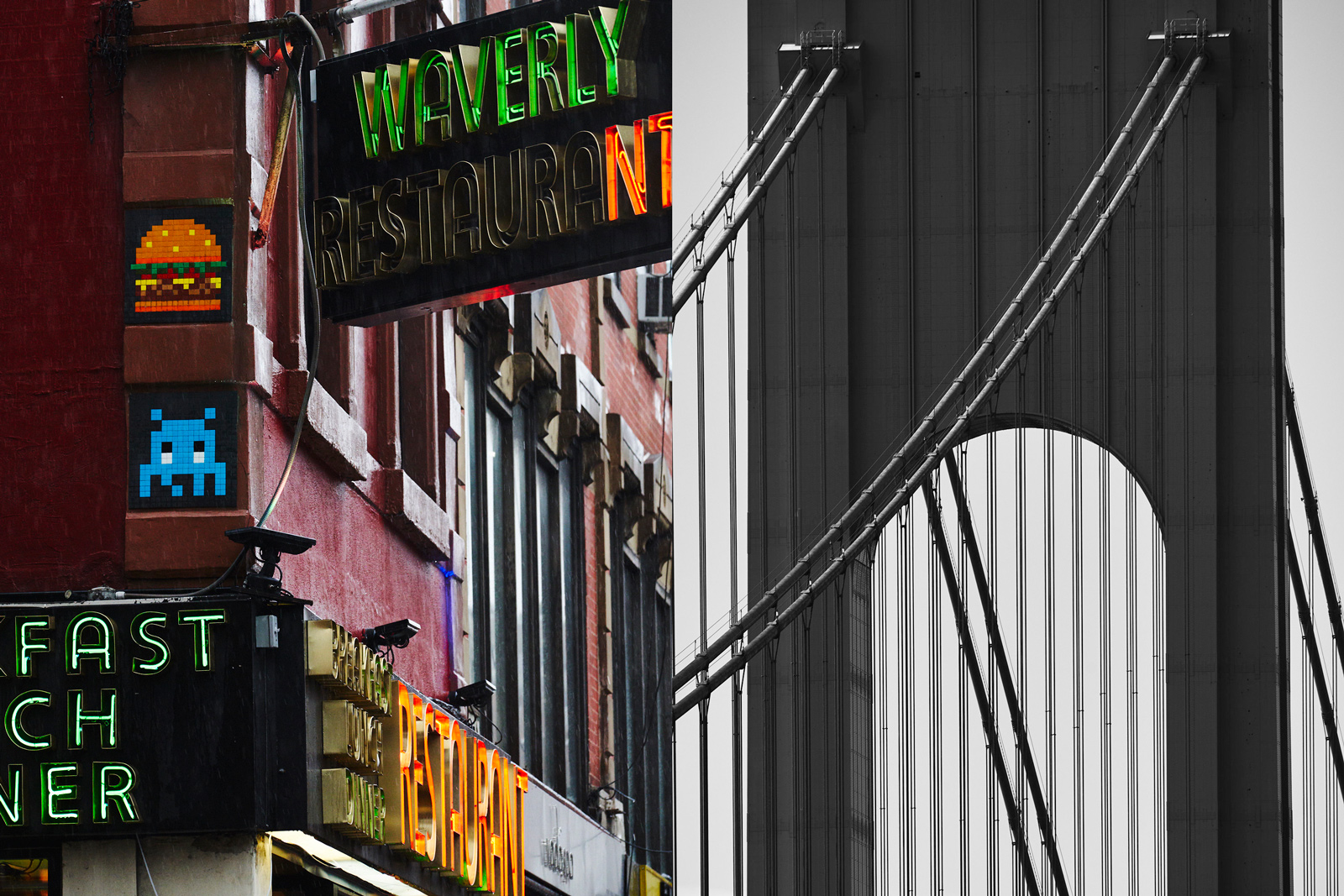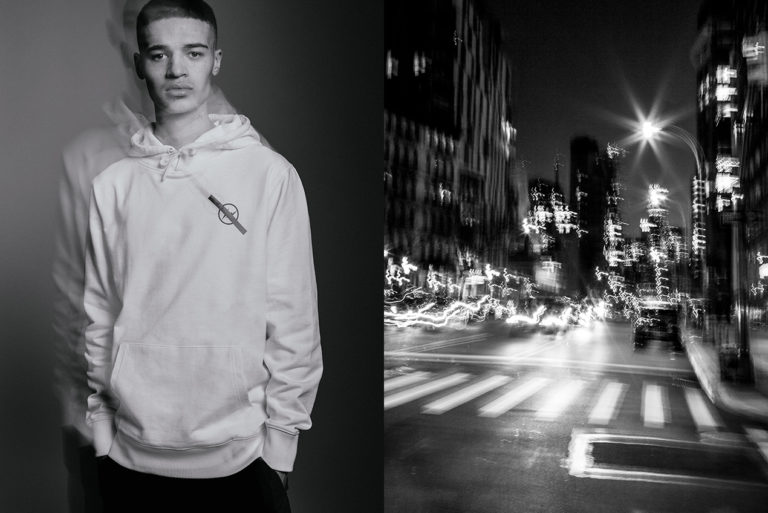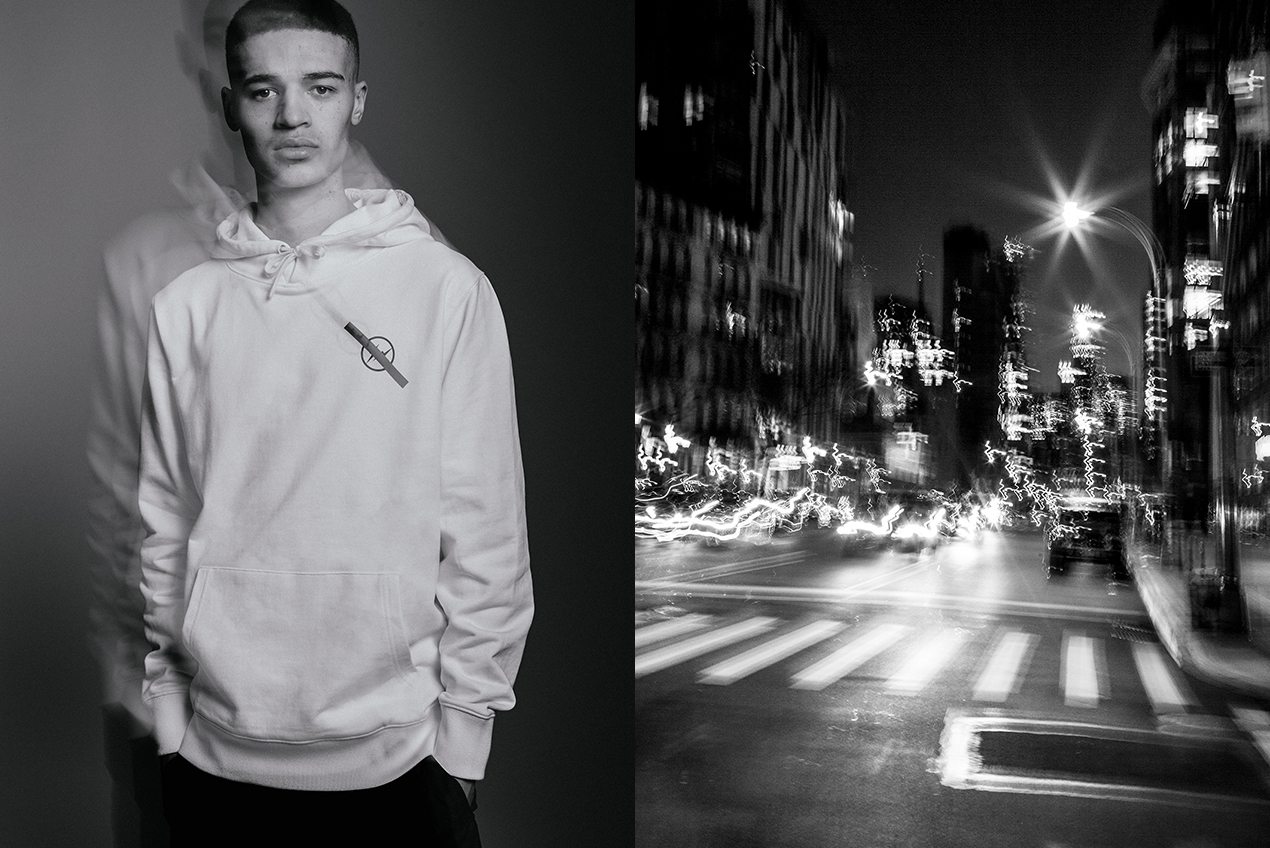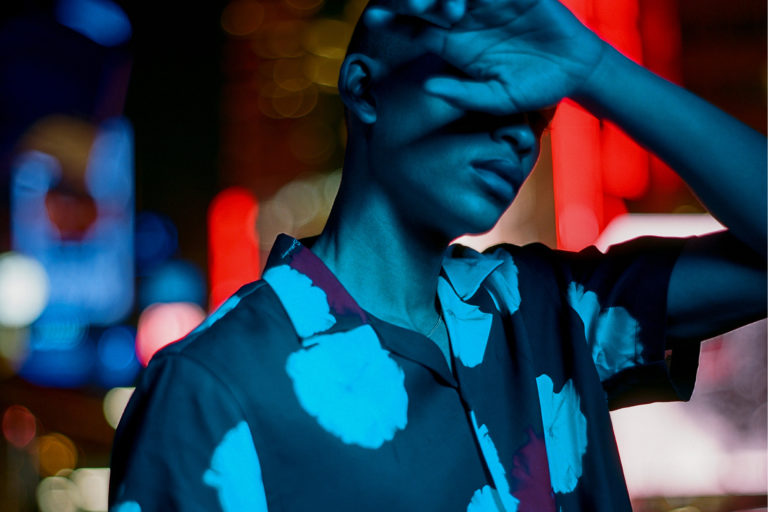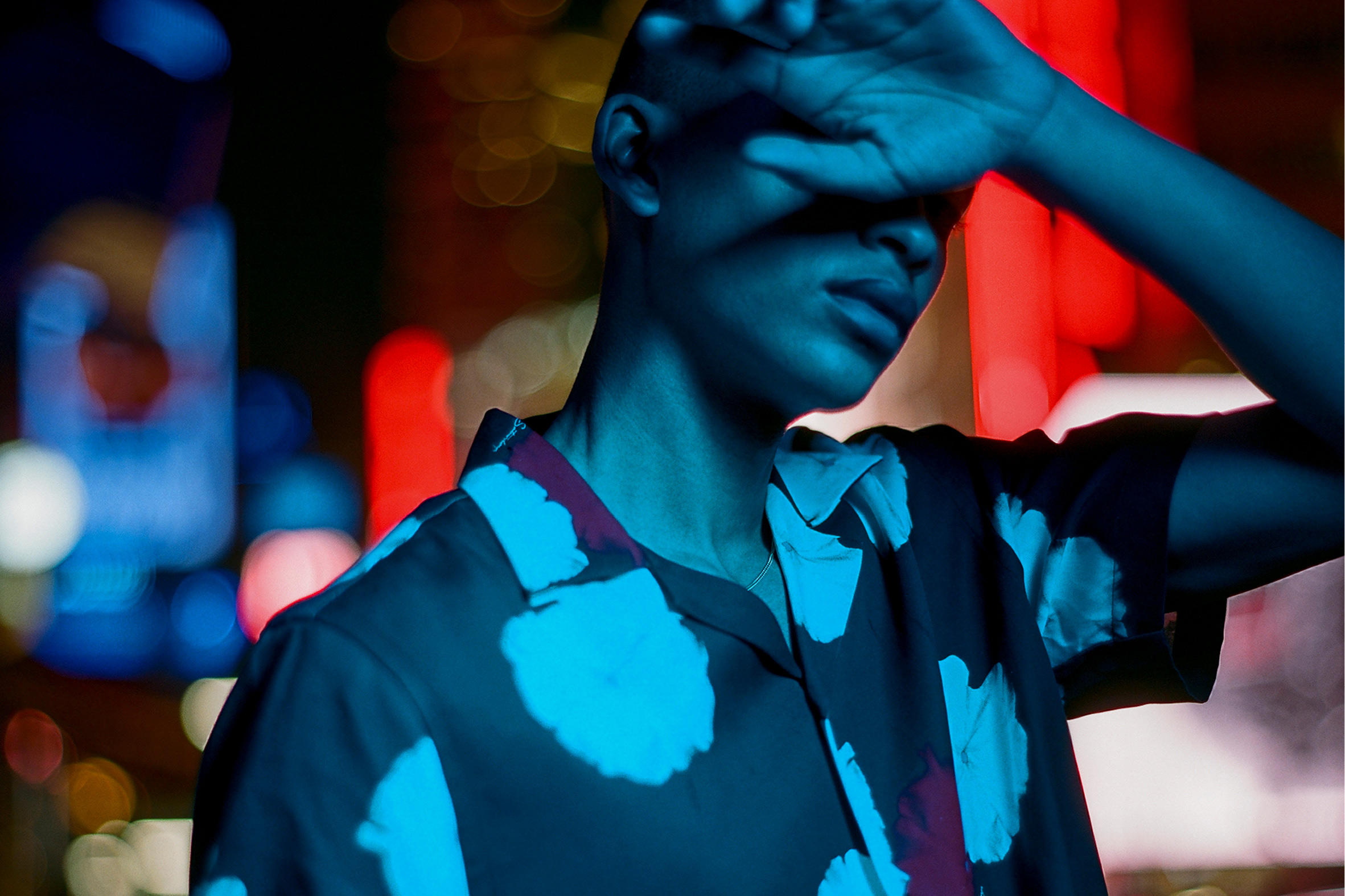dd: How did you end up in the record business?
jk: Yeah. I felt at home here. The person that had invited me to come to the U.S. was my old friend Tim Warren, who still runs this unbelievable garage-punk reissue label called Crypt Records. I stayed in his apartment on 22nd between 1st and 2nd for a while, and he showed me the ropes of the city. I was also friends with the painter Joe Coleman and his wife at the time, Nancy, who put me up for a while and showed me around New York, introducing me to people. Then things began to snowball and a lot of what seemed close to impossible in Sweden was really easy here, like making connections and getting things done. I was the first employee for a famous indie rock label called Matador Records, and I also started doing a radio show on WFMU together with one of the co-owners of Matador Records. I started writing for punk fanzines, but also professional music magazines like Spin. New York pretty rapidly became my home.
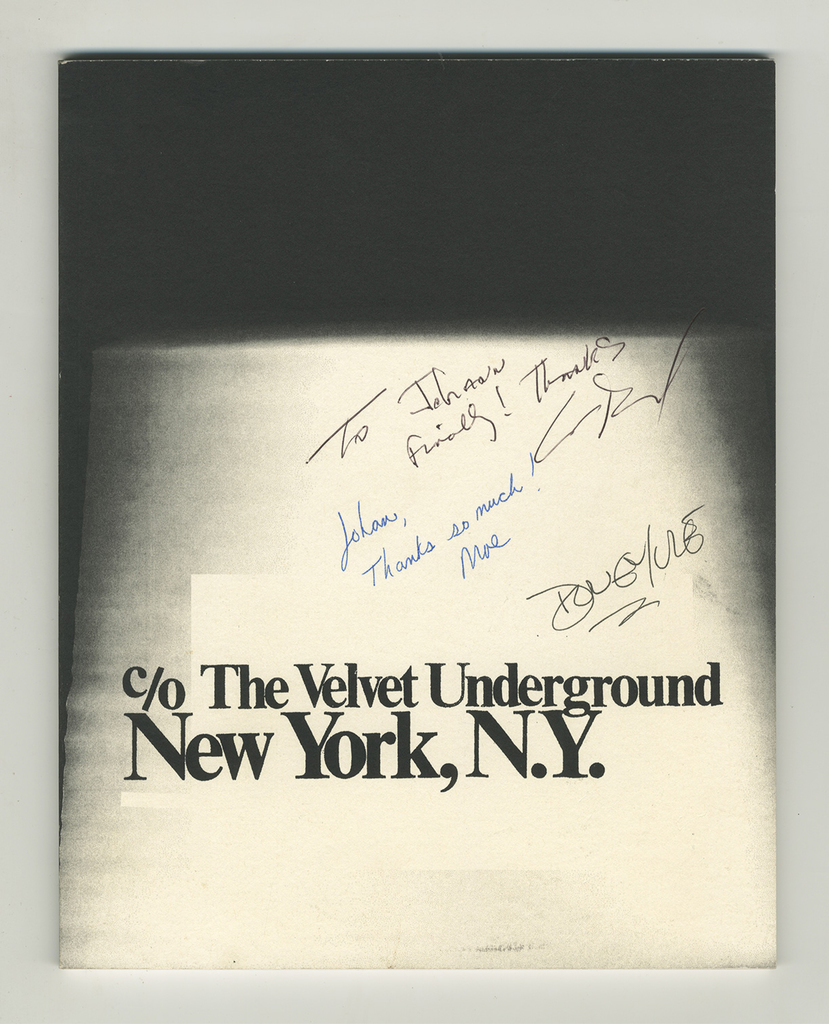
dd: What type of music would you cover for Spin?
jk: I covered sort-of hipster culture, indie rock, and underground alternative rock records. I was there for a lot of the legendary events of ‘90s rock and roll—and of course they didn’t feel particularly legendary since I was there for them—but this was the same surroundings where people like Nirvana, Hole, Melvins and Sonic Youth came out of. I was also friendly with the people around Grand Royal, which was the Beastie Boys magazine. Bob Mack who was the editor of Grand Royal was an old friend. There were always inklings of hip-hop culture and punk rock culture and by working with Gerard Cosloy and Chris Lombardi at Matador Records, we got to explore the history of punk rock in New York. In 1990, Chris, Gerard and I put together an anthology of the old-school New York ‘70s punk band Chain Gang, which was a complete financial disaster of course, but it’s definitely one of the great reissues of that era and something that I’m still really proud of. Before I got my first real job in New York, I would literally just walk around town and flip records. I could go to a record store on the Upper East Side with 100 bucks and buy tons of rare, out-of-print punk 7-inches that were still sitting in the bins from when they came out in the late ‘70s and early ‘80s. I would then go and flip them at a specialist punk rock record shop downtown and make 300 to 400 bucks. I would do that hustle fairly regularly. Sometimes I would do that hustle with rare books too. I would go and find some really desirable rare books for cheap in one book store then run them over to another rare book store and flip them.

dd: It seems like this all evolved into a career for you, and I think that’s a good segue into what you do now. Why don’t you talk a little bit about how Boo-Hooray started and what it is that you actually do here.
jk: Well it did. You know as well as anybody that when you grow older, the permanence of collecting isn’t so important anymore. You don’t really care that much if you have an unbelievable collection of Rocksteady 45s from the 1960s or a great collection of original Velvet Underground posters. It’s really fun when they pass through your hands, but it doesn’t feel that important to actually own them. I had a bit of success in the record business. After I worked for Matador Records, I was an executive at Rick Rubin’s label Def American for a few years. I was also involved in the founding of a major distribution company for Time Warner called ADA which is still in operation today.
In 2000, my second child was born and because my ex-wife was very ill after the birth of Sophia, I was more or less Mr. Mom for a few years. After about three years of being Mr. Mom, I wanted to re-enter the workplace. We also had a little bit of money because we had sold a company that we had started. Going back into the music business just seemed terrible. I didn’t want to stand around in a bar at 2AM talking to a bunch of 22-year-olds. I really didn’t want to do that, and also the record business had changed. In the ‘90s there was a lot of money: salaries were unbelievable, the perks were insane, but then when digital music technology hit, it’s like the bottom fell out of the music business. Throughout my time working for Rick, Chris, and Gerard—and also when I briefly ran an independent reissue label called Omplatten, and we made reissues of psychedelic music and Tropicalia music from Brazil—what I enjoyed the most about all of this was the archival and historical aspect of working with music. I had also been involved in putting together boxed sets of anybody from Ornette Coleman to Charlie Patton, or from the history of electronic music to the history of punk. In the late ‘90s I was sponsoring a kid who was only passionate about one thing besides drugs, and that was old-school hip-hop. He came over and stayed with us for a while and would play me these records and my mind was completely blown. It was the first time I had heard “When You’re Standing on the Top” by Super 3. As a proper OCD guy I was like, “Alright, I’ll buy the best books on the early history of hip-hop, then I’ll go and buy a ton of reissues, and then I’ll go and read up on all these websites.” I was super disappointed by how little there was. There were only a couple great books on the history of hip-hop. The best one was Charlie Ahearn and Jim Fricke’s “Yes Yes Y’all.” There was a couple of rudimentary websites that weren’t very good, and you couldn’t even buy any anthologies on early hip-hop.
I was also really interested in how universities and museums treated contemporary popular culture, subculture, and alternative culture. I started to research all of that, and then it just hits me that the timing is now to establish a really significant archive on the history of hip-hop. It wasn’t two years from now, or five years from now. It was now. From my past in the record business, I knew a lot of the nightmare stories about when big chunks of jazz heritage or early blues heritage just got thrown in the dumpsters and lost. There’s a really famous, horrible story about 90 hours of perfectly-recorded live John Coltrane with a classic quartet getting popped in the dumpster because the major label hadn’t paid the storage fee for their storage space in deep New Jersey. There’s also the famous story about how the entire Paramount Records archive was dumped into the Chicago River back in the late 1930s. There’s horrible stories about what happened with archival materials surrounding the Bob Marley estate and the Fela Kuti estate. The Fela Kuti estate was a really hot potato for me because after Fela Kuti died, a couple friends and I tried to get involved to preserve any archival materials but got the cold shoulder because of a lot of very strange disagreements around that estate. I really don’t like that. I like it when unpopular subculture history gets preserved with the same bells and whistles as the history of presidents or the history of generals. I basically started from scratch, building a hip-hop archive with the sole purpose of having it be the foundation archive for an academic institution. I spent a lot of time, money, and research doing this. I had the best nickname uptown. I was known in the Bronx as the ATM. As in, “I just found a stack of old hip-hop flyers, I’m going to go down to the ATM so I can get some money for the weekend.”
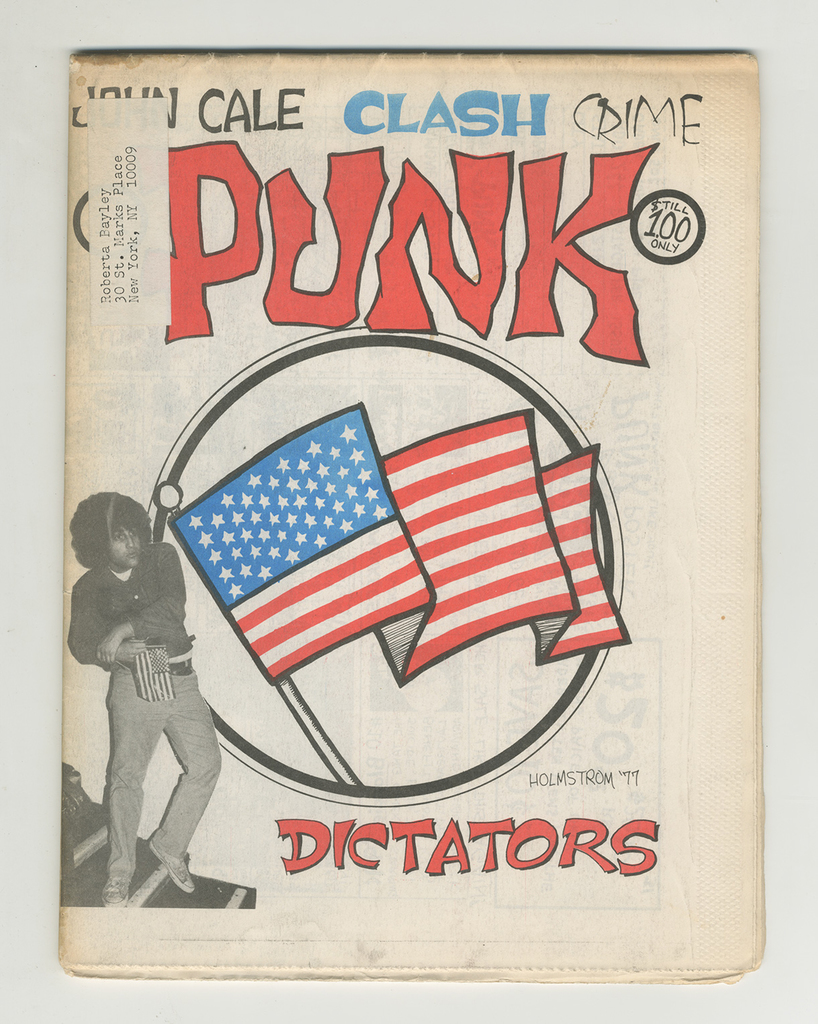
dd:So these guys would come from uptown and bring you these flyers and you would give them cash for it?
jk: Yeah, I would totally cash them out. I would get receipts, but I would totally cash them out over and over again. I would go up to the Bronx regularly and to Co-op City or Mt. Vernon and go through storage spaces. I always had people looking for abandoned storage space auctions, which is where I’ve found a lot of really amazing stuff. After this had been going on for several years I started thinking that this archive really was substantial. I wanted to exhibit it, so in 2005 I partnered with The Vinyl Factory in London and staged a gigantic overview of the early history of hip-hop in a space in Soho. It was killer. Several streets got shut down, there was breaking in the street, famous DJs, it was a real proper shindig. The following year we followed it up by doing the same event in Tokyo, which was also a huge success. This landed me a book deal with Rizzoli to do one of my first books which was an overview of the earliest years of hip-hop born in the Bronx.
Around the same time, I started trying to get my foot in the door with these cultural institutions. I went and saw pretty much all the major research libraries on the East Coast to see if anyone was interested in a hip-hop history archive. Some people said they would only take the stuff if it was for free and if I’d pay for the archiving. I went up to visit probably the most famous research library in the world because some of their hip-hop faculty was showing interest in the hip-hop archive. This place has 73 libraries and they are all connected by these underground tunnels. It’s completely insane. I was walking through one of these underground tunnels and I noticed a few boxes sitting along the wall, and I’m a curious guy, so I pop open one of the boxes and there were just stacks of illuminated manuscript pages from the 15th and 16th centuries. Not very fancy ones.


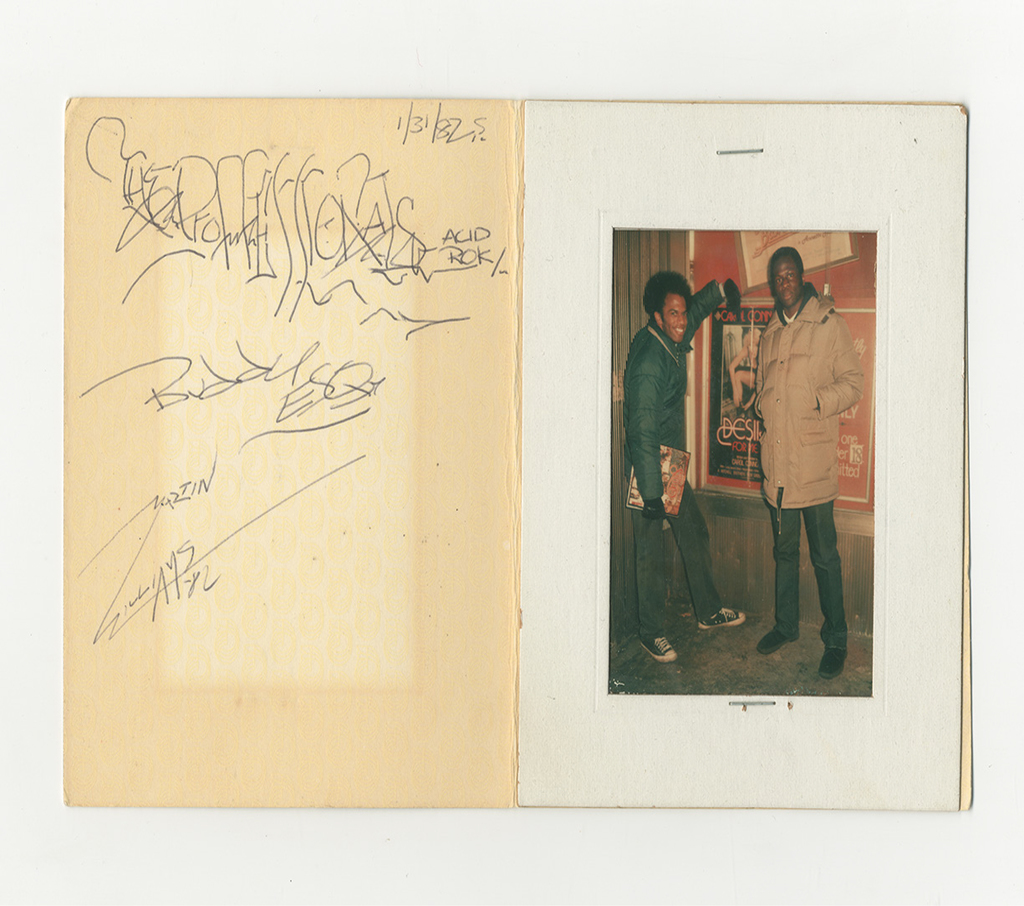
dr. wolfe: Can you tell us what an illuminated manuscript is?
jk: In the time before the printing press, monks in workshops would hand-write bibles. They are basically handmade bible manuscript pages that sometimes had rich decorations and hand-painted illustrations of the life of Jesus and so forth. There are illuminated manuscript pages that go for tens and tens of thousands of dollars, and complete illuminated manuscripts are sometimes in the millions.
dr. w: So this institution just had them in boxes?
jk: This institution clearly didn’t care about them very much because they weren’t top-notch, so they had them just sitting in dusty boxes. Standing there, my epiphany was, “Motherfucker if this is what they do with illuminated manuscripts then what are they going to do with my hip-hop flyers?”
It was around this time that I happened to meet Katherine Reagan from Cornell University. We were introduced by Michael, a mutual friend who worked for the rare book seller Ursus Books. I was just in the right place at the right time because Katherine had been thinking about how to start collecting popular culture for the rare book library at Cornell. I had been looking for a partnership with an open source university library that could really support this narrative. So the Cornell hip-hop collection was established in 2007, and in 2008 we had a gigantic hip-hop history symposium that was attended by almost 1,000 people from all around the world and Afrika Bombaataa was a keynote speaker and tons of other famous DJs were up there. The Cornell hip-hop archive is kind of the perfect storm, because it’s consistently showing enormous amounts of community involvement. It constantly invites the pioneers of the movement up to do workshops, lectures, YouTube performances and stuff of that sort. It’s even branched out and now the English department is interested and the dance department is interested, so it couldn’t possibly be better. My foundation archive that I donated to Cornell has been built on ever since, and now it contains over 250,000 objects.
dd: I feel like you have a very special definition for what an archive is. Can you define what an archive is for our readers?
jk: The best one is, of course, Garrick Beck’s definition.

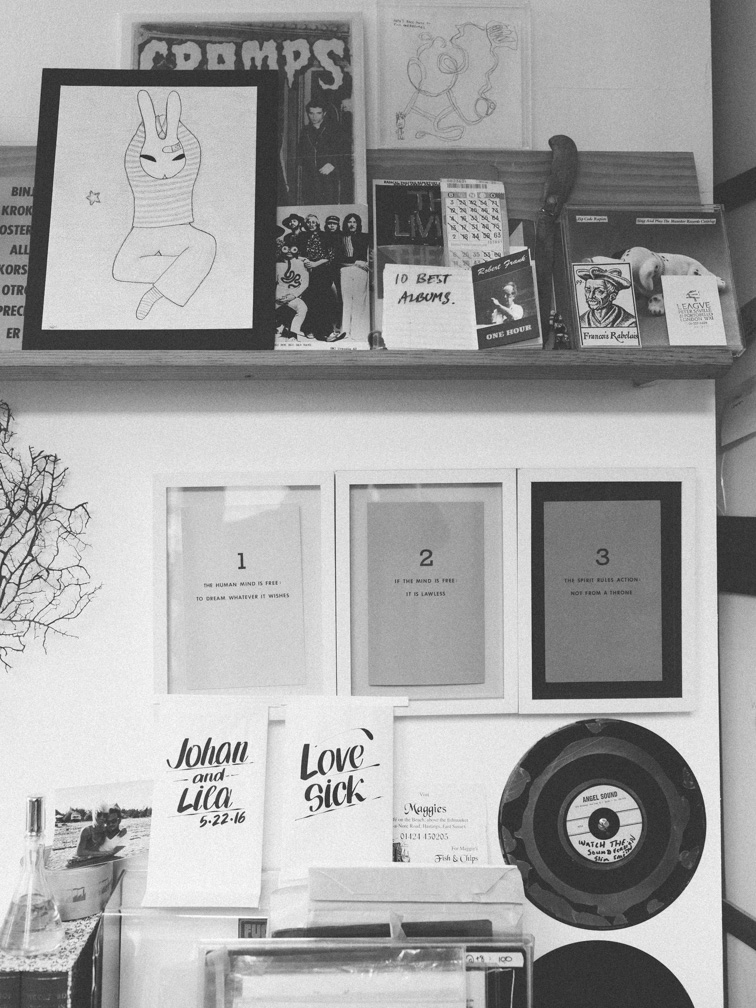
dd: (Reading from phone) An archive traces an arc across time, it shows an act of actions that set a stage and how those acts mark the time from one era into the next.
dr. w: We went on our honeymoon to Drain, Oregon which is one of the hippy compounds of The Rainbow Gathering. We stayed there, and Garrick Beck had boxes and boxes in the attic of his farmhouse of The Rainbow Gathering archive. It was every flyer, every collected gathering post, and he was on his hands and knees digging through this archive in order to extract it and preserve it.
jk: And, of course, Garrick Beck is the son of Judith and Julian, founders of The Living Theatre. So, an archive is a bunch of stuff that’s survived the gnawing teeth of time. If you have the life’s work of a famous poet, the materials that he or she kept in their attic or the boxes kept in their basement are all the residue of a life of creativity. I did a monograph coffee table book on The Velvet Underground about eight or nine years ago. I also staged an exhibition commemorating The Velvet Underground which first showed in New York and then travelled around the world to Japan, France, Holland and Sweden. I got to work intimately with Lou Reed for a couple of years, and he was really interesting. He was into somebody else taking care of his past history, but he had very little—only audio recordings and business records really—and he would also with great relish talk about how he had burned his notebooks and would say, “Johan! I just burned one of my notebooks what do you think about that?” I would be like, “Well you know, it’s your stuff, but if I had that notebook I would make sure that it landed in a university library.” I appreciate his point of view which was that as an artist he only wanted people to see his end result—whether it was his finished draft, his finished poem or his finished text. He didn’t want anybody to see the process, but of course as a historian or as a scholar, it’s the opposite. You want to see as much process as you possibly can. The Velvet Underground archive was first an exhibition where a bunch of different private collectors would lend really cool materials to celebrate the band—like a fanboy/fangirl kind of thing. Then, in turn, this resulted in a big book that we did with Rizzoli in 2009. It was during the research for that book that stuff would just start showing up all over the place. It’s almost as if the stuff decides when it wants to be found. Lou passed away in 2013 and Lou’s alma mater was Syracuse University, so he wanted the Velvet’s archive to end up there. I spent a couple years working with the university trying to get the money together and trying to get the university really involved. It’s kind of a jock school so they weren’t that interested in this trajectory. When that couldn’t happen, I asked Lou’s widow, Laurie, if she was okay with the archive going to Cornell University since it was only 20 minutes away. She said she was fine with that, so the happy ending of that story is that Cornell University has the biggest Velvet Underground archive in the world, and it has enormous amounts of scholarly use already.
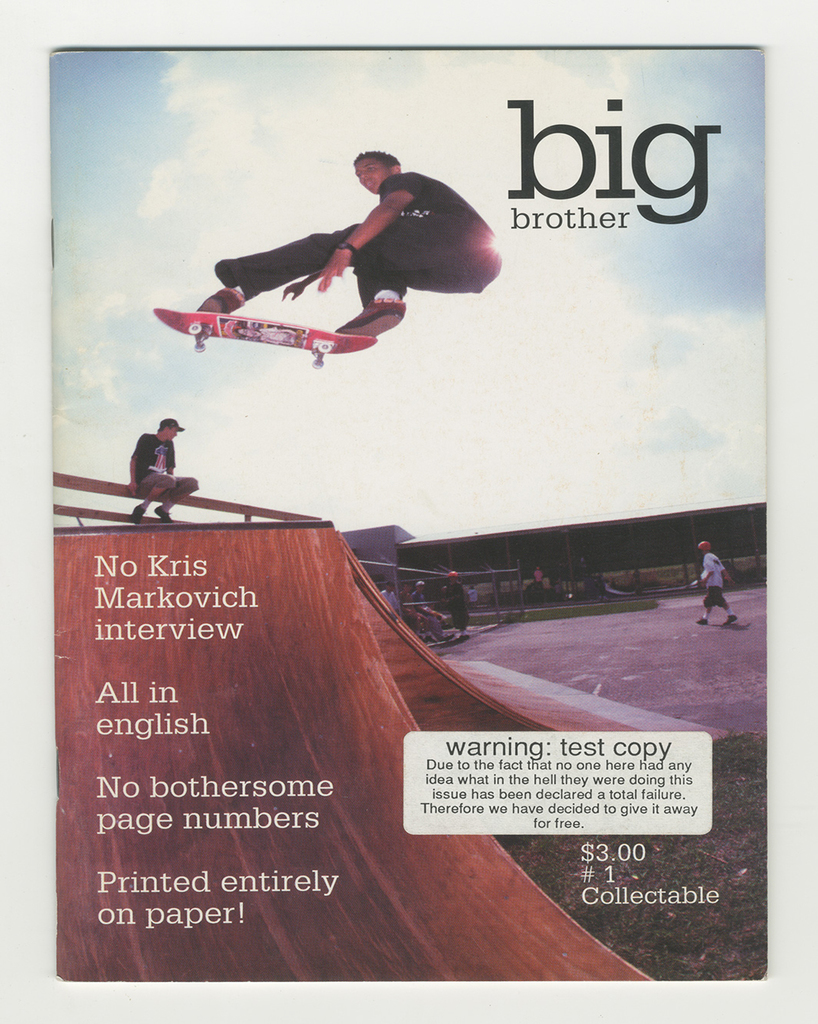
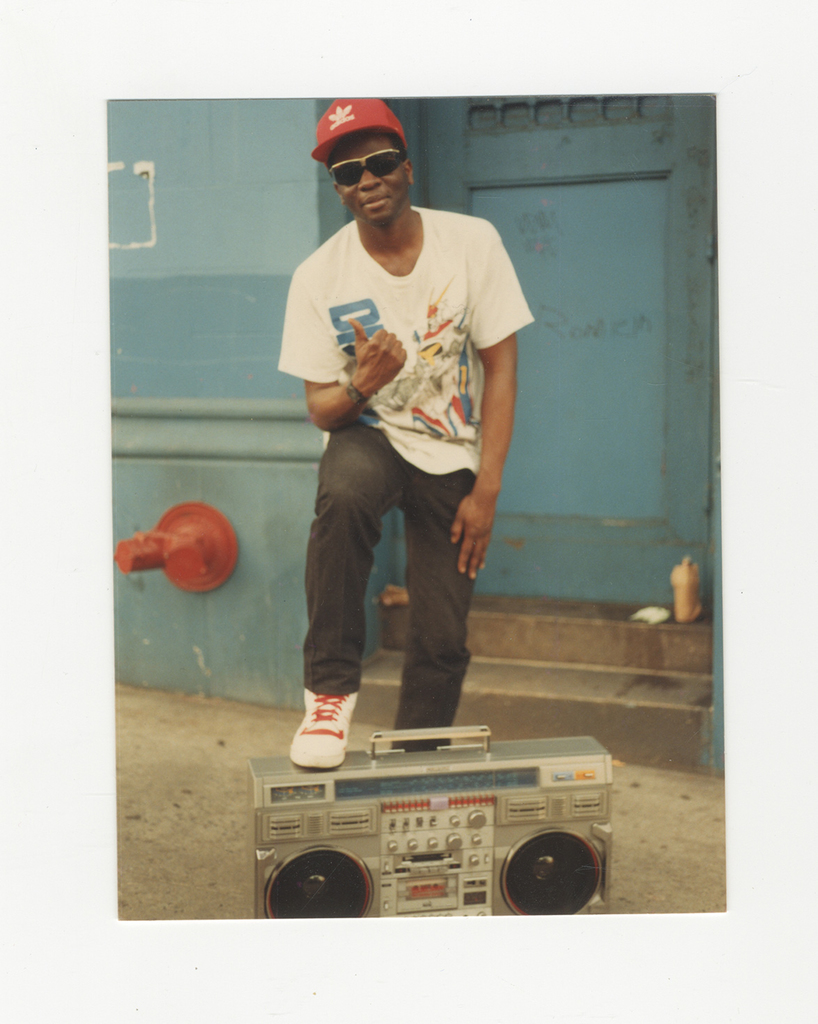
dd: What I find most interesting about your archival work is that it’s in the not-so-distant past. With people having more access to information today, and the rate of speed at which it’s circulated, is there more of an urgency to preserve these materials?
jk: Absolutely. That’s a really complicated question, and it has a really complicated answer. A lot of people talk about content and archives that are born-digital and, I mean, look at all of our smart phones lined up right now and look at how you have thousands of text messages and photographs. You know your personal narrative of the last four or five years is contained in this machine. Our relationship to our memories has changed because we feel everything that’s born-digital is so super ephemeral that it actually has less meaning. On one level that can obviously liberate people from feeling too anchored in their past, but the flip side is that it really boosts this sort of hyper-individual sense of the perpetual now. Your whole life becomes this one big fucking Los Angeles, where everything is new every morning and everything that is old is a fail that has to be covered up with a veneer of the new. Anything that is an accomplishment or an event in your life is only as good as how people view it on your Instagram. The past is no longer accumulated in a way that strengthens you. It’s very Marshall McLuhan. It’s straight out of The Medium is the Massage or one of his industrial folklore books from the ‘60s. The 20th century and the end of paper makes this extra complex. Partially because of born-digital, I don’t see a strong sort of cultural movement crystallizing. It’s more like what Peter York described as Art Necro in his book Style Wars. Art Necro is when movements break down so quickly that they don’t have time to attach themselves to anything. This is what I have been seeing over and over again, hundreds of thousands of micro-tribes and those micro-tribe people just keep on moving on and never really reach critical mass. There’s a famous situationist text by Christopher Grey called Leaving The 20th Century that was a super big influence on the Sex Pistols. Leaving The 20th Century is about how anchored people get in certain political ideals and pop culture narratives, and how you actually have to figure out a way to depart from them before any new ideas germinate, and that no one has really done this with any success. So yeah, we’re totally stuck in the 20th century. The residue of all of these post-war narratives—and I’m not necessarily saying that they’re bogging us down and fucking us up—but they definitely control the trajectories of people who weren’t even born when they happened. We are ruled by pop. We are ruled by punk. We are ruled by a lot of radical and not so radical political thoughts of the 1950s and 1960s that people haven’t really moved on from yet. When you investigate subculture and counterculture you notice one thing really rapidly. Culture on the margins is where edges overlap and new ideas germinate.

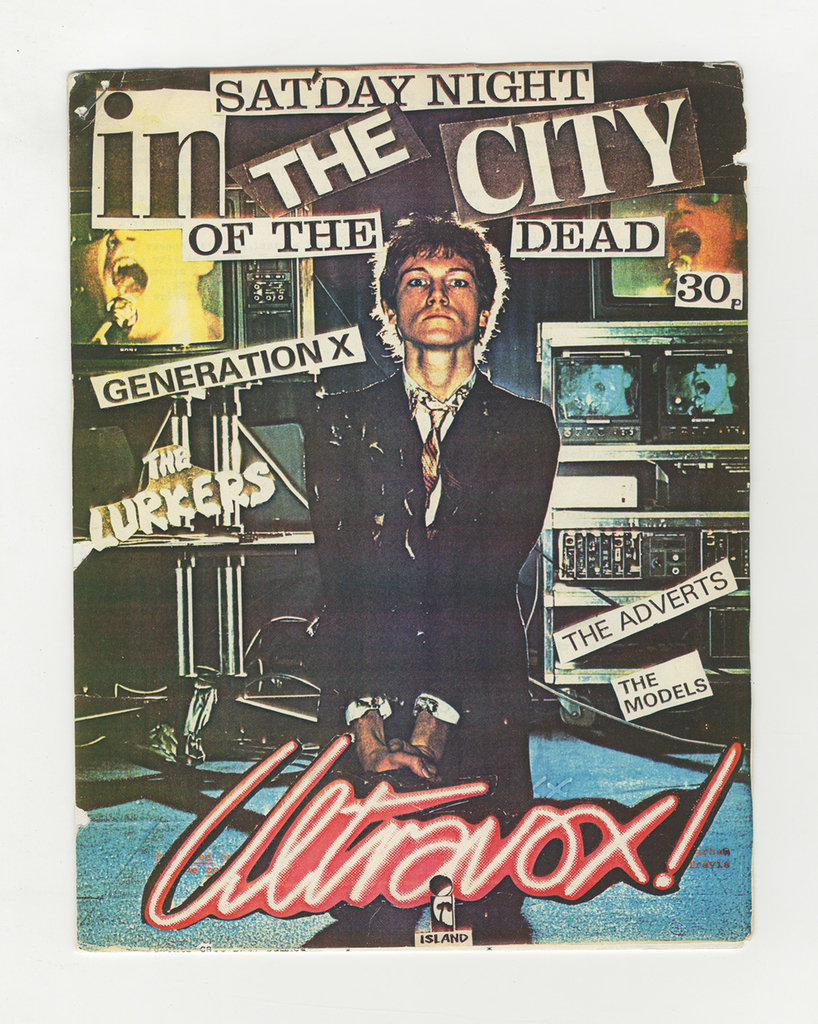
The premier English anarchist punk band Crass existed between 1977 and 1984. They certainly sold some records and made a media splash in their time, but it’s utterly fascinating how much their cultural importance has been snowballing ever since. To see what this anarchist group from East London in 1984 has become by the year of 2017—as far as influence goes—is absolutely incredible.
Hip-hop is another really fascinating thing because forty years ago the founding fathers consisted of fewer than a hundred people in about two neighborhoods in the Bronx. Then it became a global mass culture that simultaneously functions as absolute mainstream swill and global kickass grassroots activism at the same time—and there’s no contradiction between the two. Documenting these kinds of narratives for scholars, academics, and fanboys/fangirls to utilize is the work of Boo-Hooray. Boo-Hooray acts as the immediate middleman. We got a call from The Living Theatre four days before they were going to get evicted from their space on the Lower East Side. I’m on the phone with Judith Malina, one of the founders who’s asking for help, so I show up with my team, and we excavate and archive the entire contents of the basement theater, which comprises of hundreds of thousands of objects. When we’re done, another one of the founding members goes, “Oh yeah, I think we have a storage space in New Jersey that we haven’t paid the rent for in the last ten or twelve years.” Well luckily that storage space hadn’t been emptied out, so then we had another million pieces of paper.
dr. w: Why was The Living Theatre important?
jk: The Living Theatre was so important. Enormous amounts of super famous actors come through the theater in the early stages of their career. When Judith and Julian met as anti-nuclear activists in 1946 they would sit around in Julian’s room and type up little anti-nuclear slogans on the sticky labels that you put on jars of jam and then walk around gluing them up around subway stations, bars and delis around New York. They were fascinated by theater, so they started performing theater in their apartment on the Upper West Side. They were so goddamn hip that not only were they among the first people to produce plays by Gertrude Stein or Samuel Beckett in the U.S., they also brought in the Beats, vanguard jazz musicians, and they staged completely integrated plays with black and white actors performing on the stage together way before anybody else did. They were really involved in the anti-Vietnam movement super early on and they staged one of the most notorious and famous anti-war plays, Kenneth Brown’s The Brig in 1964, which actually got shut down by the police. Jonas Mekas, who’s the filmmaker I worked with, and a 94-year-old super-genius and total legend, actually broke back into the theater with his brother and the cast to document the play as a film after the cops had padlocked the doors. In 1968, The Living Theatre was performing theater for the students in Paris during the May ‘68 student uprising and ended up occupying a legendary Parisian theater called The Odéon, which acted as a field hospital for students who had got beaten up by the cops. In 1971, Judith and Julian got locked up in Brazil after having performed radical street theater. The Living Theatre is a snowballing homunculus of radical post-war American thought. They were everywhere, they did everything, and they were so rad in both the skateboarding sense of the term and the political sense of the term.
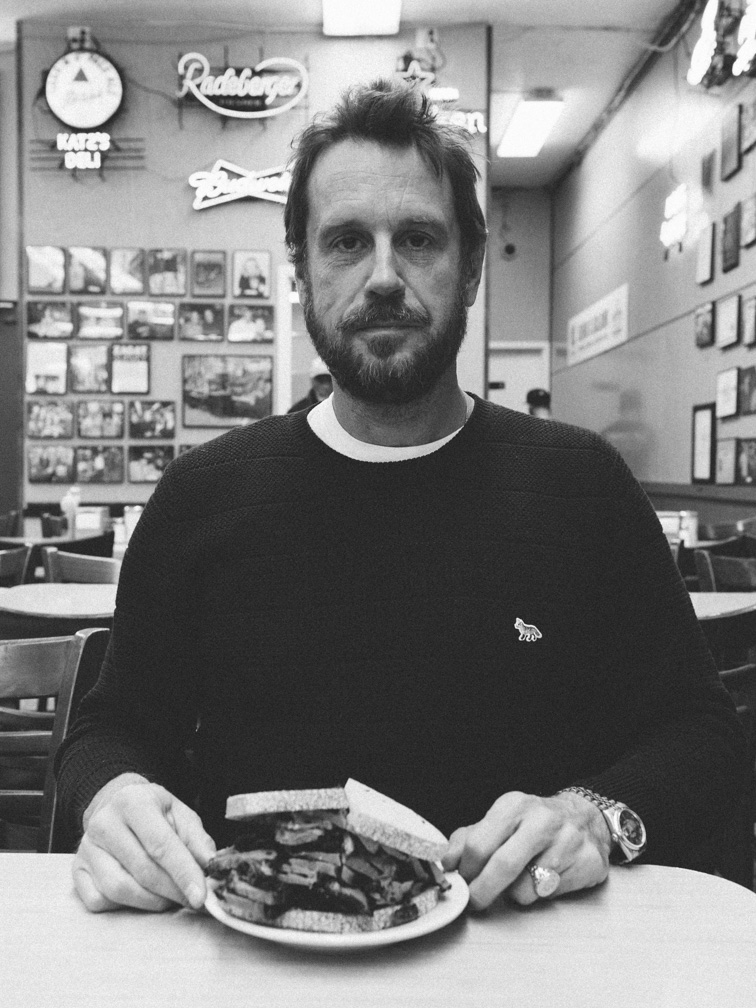
dr. w: Do you think in the hyper-fragmentation of the internet, Instagram, Facebook, and social media that that might not have been possible? The biggest activism we’ve seen in the past few months was that fool making Hollywood into “Hollyweed.” You made a good point the other day by saying, “What if people took all of that effort and started gluing locks on government buildings.” In the time of big activism, our only activism is online photographs of funny shit.
jk: That’s pretty bad and one would certainly hope that there’s consistent groundswells.
dr. w: How does that affect archives?
dd: There’s something to be said about the difference between analog and digital and how, by preserving things in analog, we are able to sustain a movement. But now with the digital age, they just show up as memes or soundbites.
jk: If there’s a backup hard copy then all is not lost.
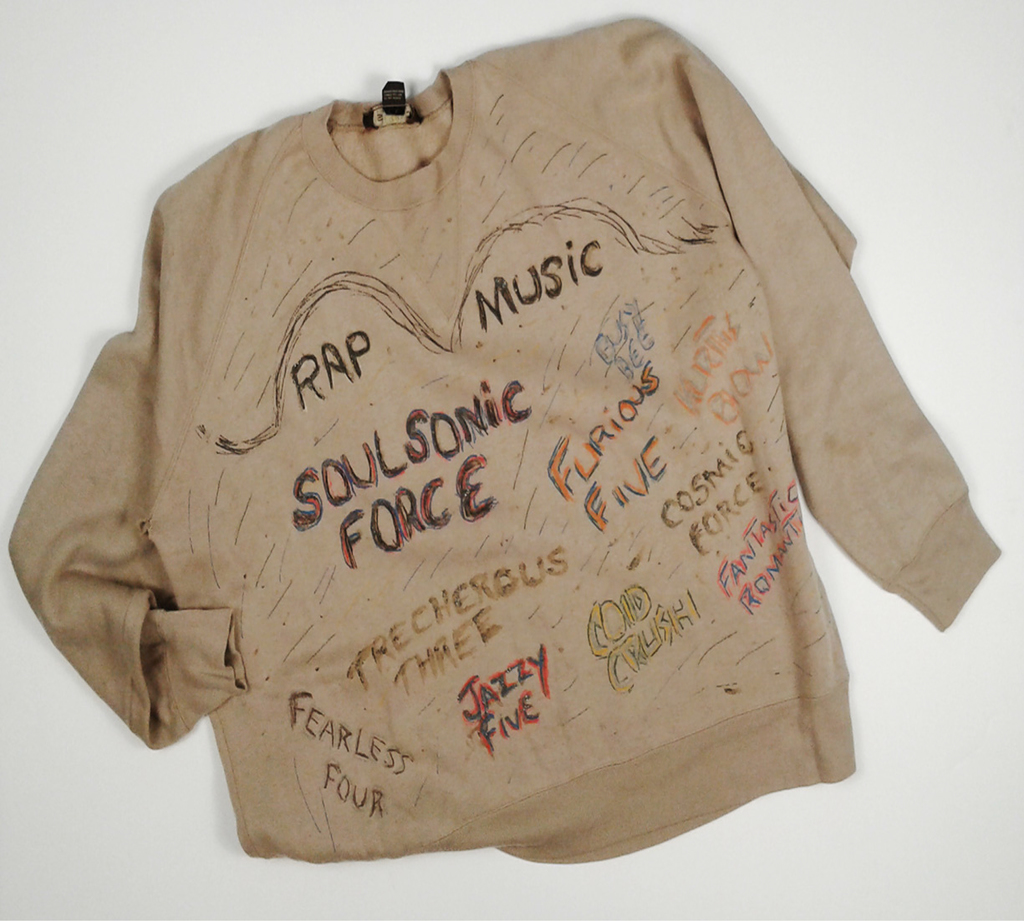
dr. w: But is the backup hard copy worth keeping when it’s just small acts of people signing petitions and taking pictures of “Hollyweed” and no one’s really doing anything except voicing outrage? There’s more happening that is getting lost because of the fragmentation of digital documentation.
jk: I’m less negative than that. Not to be the groovy old guy who is down with the kids, but I was down pretty much once a day during Occupy Wall Street. Not because I agreed with what they did or even thought it was that amazing, but because it was pretty obvious to see the picturesque nature of it. All of that didn’t matter though, because it was still the first conscious political act of youth in the digital age. I wanted to show solidarity so I would go down with a roll of twenty dollar bills, some pizzas, or a couple bags of apples. The funny flip side of this is that during Occupy Wall Street, I would get emails and phone calls from every major research library that I dealt with saying, “Oh Johan can you go down to Occupy Wall Street and maybe pick up some copies of the pamphlets, posters, and newspapers they’re printing down there?” So I was being asked as an archivist to pilfer in real time the documentation of the event as it was happening. This also says something about commodification and the immediacy of all of this kind of stuff.
I grew up in the boondocks of Sweden and cultural lifelines worked really differently back then. You would have a good import record shop or you would swap punk rock fanzines with people from around the world. You would have these lifelines of connecting yourself to the culture that you were interested in. Now you can just use your phone and get whatever you want. I think in best-case scenarios, this will be a lifeline for people who have passions but who are not connected or in big city areas.
I’ll use the Cornell hip-hop archive as an example again, because it’s kind of a perfect storm. There’s an unbelievably wide ranging website attached to the archive where people can find out, through first hand documentation, what went on in the very early days of hip-hop. In this case it becomes a cultural outreach program of sorts, but it’s also like who-watches-the-watchmen kind of stuff, because who decides what gets precedent out of an analog archive in a digital format? That’s a constant struggle. That’s where economics become a piece of the puzzle, and that’s where Boo-Hooray is different, because we really stay involved for years with the archives that we work on together with institutional libraries. I’ve taught at Yale, I teach a class at The Rare Book School at University of Virginia, and I just got appointed as a visiting scholar at Cornell. I stay involved with it. I think it’s fascinating as a teacher to try to translate all of the grassroots startup culture to people who are just used to the born-digital life.

dd: Tell us about The Rainbow Gathering archive. Why is it so important to preserve that archive and how has it affected aspects of our society today?
jk: The Rainbow Gathering archive is basically the free anarchist version of Burning Man. The guy who founded Burning Man said he basically just made a commercial version of The Rainbow Gathering. The Rainbow Gathering is completely anarchist and it has ranged from 5,000 to 20,000 people each year. It’s done in a different location each year at a national park and it’s a completely sustainable hippie gathering. They pool their own water in from brooks, they build their own ovens out of mud to bake bread in, they cook on open fire pits, and they build theaters that they can then take apart and dismantle. Once they’ve set all of this up, 5,000 hippies trip balls, do drum circles, pray for world peace, and do terrible theater—which is fucking great. The ramifications of The Rainbow Gathering are enormous, because everything from Whole Foods to Organic Valley Dairy Farms to City Gardens to major supplement companies all have their roots in this.
Six years ago, I did an exhibition on a book about punk aesthetics where I worked with the science fiction author William Gibson and the English music writer Jon Savage—two close friends and two of the smartest people I know. We were having long conversations about, “What the fuck does all this mean?” and what’s so fascinating is that 300 years from now—which is the perspective I try to keep as a historian—nobody is going to remember The Grateful Dead. Nobody is going to remember tie-dye. Maybe they won’t even remember Jimi Hendrix for all I know.
A seismic societal shift has occurred that says taking dietary supplements is not weird and that Walmart and Kmart selling organic groceries is not weird. This has created a trickle down, so that it’s not only the privileged middle class that will pursue healthier diets and drink fucking Kombucha. That’s an actual seismic societal shift that came out of the hippie movement. One of the things that I’m most fascinated with right now is how deep the counterculture roots of sustainability are in America. Everything from how you grow organic food to being okay with alternative and natural medicine to dietary supplements has become OK and normalized.
It’s the same thing with punk. I think The Sex Pistols will be remembered 300 years from now—but The Ramones? Maybe, maybe not. The distinction is that the distance between the self-starter impulse and its execution doubtlessly got diminished through punk. If a seventeen-year-old girl wants the vegetarian lunch option at her school cafeteria, plays the bass in a band, and starts a chat site on rabbit breeding then she’s doing it. The enormous diminishment of the distance between the impulse to do something and its execution is the legacy of punk. When you look at it as a rolling ball of code, that means everybody who utilizes this code doesn’t even have to identify where it comes from. When you see a museum-quality punk walking down the street with a museum-quality mohawk and leather jacket, maybe that isn’t punk. Maybe it’s just a quaint relic. So maybe that seventeen-year-old girl who started an international zine on rabbit breeding—maybe that’s truly what punk has become in that timeframe. In the same way, you can see how hip-hop is like the Jay Z mainstream swill and, on the other hand, is like a bunch of kids in Nigeria or Korea or Australia having b-boy nights and doing DJ sets and making their own beats.
dd: What do you make of the white upper middle class kid from Connecticut wearing jeans below his butt driving around with gangster rap blaring from his speakers?
jk: Oh, they used to get on my nerves nonstop—especially when I would see privileged white people fronting as inner city African American gangsters. I had an epiphany while in Greenwich, Connecticut working on the hip-hop archive. I drove past a Ralph Lauren and there were a bunch of suburban homeboys and homegirls hanging outside, literally with cornrows and baggies and Nikes and the whole schmear. I have this strange epiphany while I’m looking at them, and I realize that their culture is not providing them with some sort of emotionally grounded sense of integrity or identity or happiness, so they are gravitating towards something they perceive as authentic and fulfilling. I couldn’t be mad at that. This might also just be about growing old and getting soft so that you’re not mad at posers anymore, and you’re just thinking about whatever gets those people through the day.
dd: You spent a lot of time with Afrika Bambaataa when you were putting together the hip-hop archive. Can you tell us about some of the adventures you had with him?

jk: Yeah, I’ve known Bambaataa for a long time. I met him through Joe Conzo. The biggest honor that’s ever been bestowed on me was when I got sworn in to Zulu Nation as Brother Johan in 2007. It was pretty insane. That was the most unbelievable honor, because Bambaataa said that I had provided services to the culture that he wanted to honor, which was unbelievably great. I started talking to Bambaataa about his archive maybe 15 years ago. In 2012, I get the phone call and he’s like, “Yeah, Johan, I’m ready to deal with my archive and all of my storage spaces. Let’s empty them all out next week.” They were in several different zip codes in several different states, and they had to be dealt with at once. The record collection alone was over 50,000 records and they were all bundled in string in gigantic piles. We had to figure out how to sort and organize it.
There was never any doubt that the archive was going to go to Cornell because Cornell had appointed Bambaataa as the first professor of hip-hop. I called my friend Gavin Brown who owns Gavin Brown’s Enterprise, and while we were on the phone Gavin said, “Remember when we were kids we would go to the Natural History Museum and we would see scientists brush dinosaur bones and how stoked we were?” So we decided to do an open archiving of Bambaataa’s collection. We set up about 15 interns with laptops and a bunch of tables in Gavin’s gigantic gallery in West Village, and the entire archiving process was open to the public. People could come in every day and we would have a couple different DJs spin from Bambaataa’s record collection. People could actually go and experience fully the process of organizing the collection but also the music and the culture of it, which was really great. The happy ending was that the following summer of 2013 we did another exhibition in Gavin’s gallery showcasing all of the crazy treasure that we had found in the Afrika Bambaataa archive like the original lyric and costumes of Planet Rock, super rare cornerstones of hip-hop culture on vinyl, rare acetates, medallions and photographs. We did this actual museum-quality show on the history of hip-hop, and it was free and open to the public. Yet again, we had a steady stream of hip-hop legends come in and perform lunchtime concerts in this space.
When you investigate subculture and counterculture you notice one thing really rapidly. Culture on the margins is where edges overlap and new ideas germinate.
dd: I recently had the privilege of reading an essay you wrote for Levi’s Vintage. How did you come to be an authority on men’s style? You’re so iconic in Japan.
dr. w: He’s big in Japan.
jk: I am big in Japan (laughs). There was a magazine called Free & Easy that was basically the style bible for Japanese geezers. It was for dudes who were in their ‘40s and ‘50s who were still vain as fuck and didn’t want to wear that sort of floral man-scarf stuff, but who are instead obsessing over classic American menswear. I’ve been obsessed with it ever since I stepped off the boat from my own country. I would go to Domsey’s and Pop’s Army and Navy in Greenpoint and buy old Levi’s and old workwear and bowling shirts. This was the coolest cheapest stuff you could buy.
dr. w: All the club kids would go to Domsey’s and no one would tell anyone where they bought anything from, but everyone knew it was Domsey’s.
jk: Free & Easy for some reason got me in the crosshairs and they started showing up at my house and would do these articles once in a while. This Japanese journalist would ask if they could photograph my shoes, and then they would photograph all my shoes, and then they would ask, “What were you thinking when you bought these shoes? What were you looking for in these shoes?” Or sometimes they would come and photograph my leather jackets and ask, “What are you looking for in a leather jacket?” or photograph my bookcase or my blazers or belts. I had done a couple of clothing collaborations in Japan. I did a collaboration with Undercover, which is a super famous cutting edge fashion brand. I also did a couple collaborations with my friend, Nobuhiko Kitamura, who has a brand called Hysteric Glamour that’s made for the rock and roll luxury dudes. I’ve also done collaborations with United Arrows several times. In fact, they sponsored the first hip-hop exhibition I did in Japan in 2006. We did the most ridiculously amazing clothing line in conjunction with that event. We had the people who manufactured Dior’s stuff do hip-hop t-shirts, scarves, blazers and stuff. The Japanese like me for some reason, and the trickle down is that I’ve always sort of been on the margin of the menswear style universe. I’ve been involved with AnOther Magazine and Dazed and Confused, along with some Japanese publications like Huge and Free & Easy. Once in a while they’ll just photograph me and my clothes and ask me what I think about denim, or ask me what I think about sneakers. I think the older I get the more important it is to like the clothes you wear. If a piece of clothing is not appealing to the good Dr. Wolfe then I won’t wear it. How I actually feel about the clothes I put on has become more and more important. I’ve always loved Italian dudes in their 60s and 70s and how precise they are about their style and how stoked they are on it. This is also completely mirrored in hip-hop. All those years that I spent with the founding pioneers of hip-hop I realized that they didn’t talk about hip-hop, and they didn’t talk about women or culture—all they talked about was clothes.
dd: There’s a distinct difference in your sensibilities about clothing and hip-hop culture’s sensibility about clothing. Can you explain this “fresh out of the box” idea in more detail?
jk: That’s a really fascinating idea because there will never be a vintage clothing store uptown. It’s never going to happen. It’s the dictatorship of the new where anything that’s old is considered passé and a throwaway. Throughout the ‘90s whenever I would be asked who my favorite designer was I would say that I have two: the US Army and the US Navy. That to an extent still holds true. I just did an interview for that magazine Fantastic Man, and all they wanted me to talk about was fabric feel and what kind of fabric feel I’m obsessed with. I love old awesome worn-in cotton. William Gibson has mentored me because he’s totally my menswear guru and, in fact, he’s had a line in Japan for years with a company called Buzz Rickson. They are a company that solely reissues vintage American army and navy clothing. The quality is beyond bananas. Gibson will talk about how after 10 or 15 years of wearing something you’ll be like, “Yeah, this pair of jeans or this sweater is finally starting to get right.” So maybe this is all the flip side of the “box fresh.” If you see really old English aristocratic people, they will always wear super expensive clothes that are absolutely worn to shit and are threadbare and falling apart. There is something really appealing and anti-digital about that. I think that a lot of the people we see around us strive for that but don’t know how to get there. They want those kind of classic, emotionally rewarding stylish pieces with the timeless fabrics, but they don’t know how to get it. They’ll go to the guys in Bushwick with the big beards and the lumberjack shirts and drop four hundred bucks for the sweatshirt and end up being kind of disappointed that what they’re getting is not exactly right.
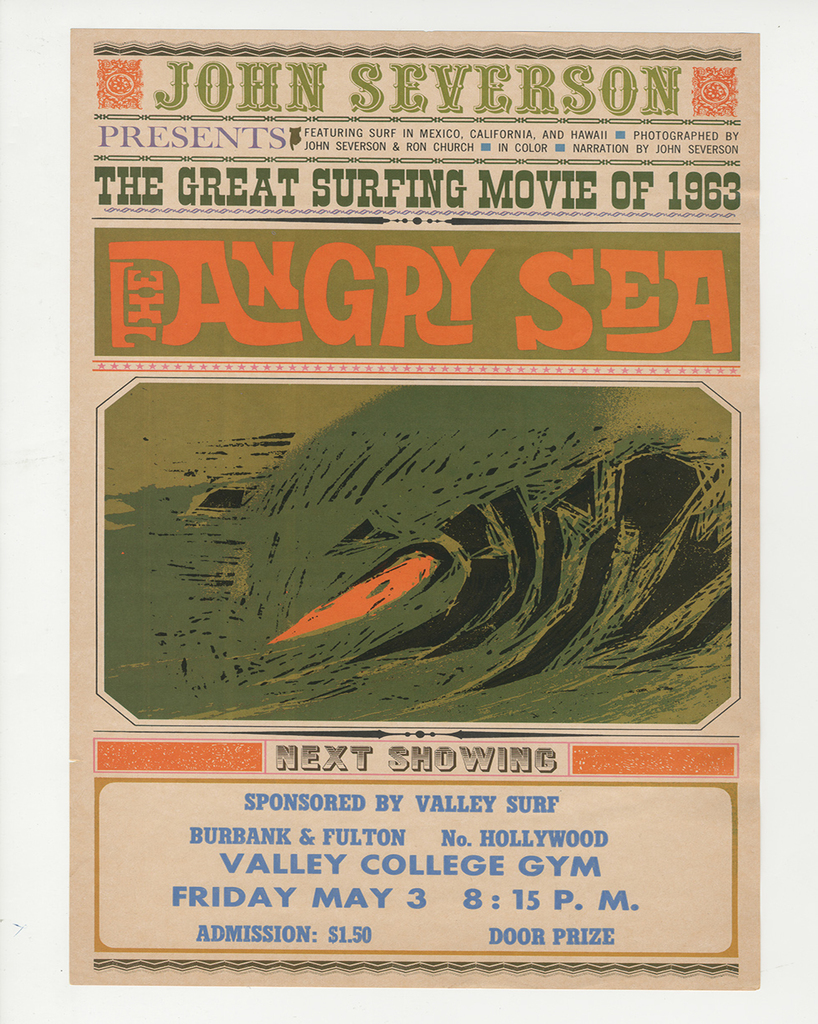
dd: Where does your fascination with subculture and marginal-culture stem from?
jk: That’s a hard one to deconstruct because it’s definitely wrapped up in personal nostalgia. My family is a somewhat prominent Swedish merchant family, and when I was little there was still an ancestral family estate that we would go to once in a while, and I remember the smell and the look of the library there. Piles of dusty old books everywhere and how unbelievably amazing that was. I also remember the early days of punk rock with the zines and the constant exchange of ideas. On Sundays, we would meet and have coffee and lend each other stacks of the punk 45s that we bought. File sharing in the pre-digital world. I like it when the diaspora of sensibility gets widened more and more, and when you actually have the opportunity to find out about more marginal stuff. All this is fueled by enthusiasm and it’s become a business, which makes me feel really lucky. Homer Simpson says that money can be exchanged for goods and services, but it’s more about being a pyromaniac of enthusiasm and of setting little blazes everywhere where people can warm their hands on. Instead of what I hate when people are connoisseurs of something and they are the only holder of the sacred flame and they decide who they can share the warmth with. I always thought that that’s so jive and that one should always attempt to spread that enthusiasm as much as one possibly can.
dd: The stuff you produce is all over the map and you don’t really covet anything in particular. If we look at The Rainbow Gathering and then your book on The Sex Pistols that just came out, they are extreme opposites, but at the same time also both subcultures.
jk: I hope that I am not driven by my own personal taste anymore. I hope that I am just driven by some sort of desire to identify culturally valid narratives that might otherwise get lost. I was always super enamored by the Italian tradition of micro-history in the ‘70s and ‘80s. That micro-historical ideal of finding out a lot about a very narrow chain of events and seeing how that knowledge can be applied on other structures is really fucking cool. Say that somebody locates 300 interviews from 1820 with nurses in the city of Lyon in France. You have this little amazing body of knowledge on a really marginal field, but then when you study that, you can figure out how nurses in Senegal in 1930 thought, or what dental care students in Aberdeen in 1980 were thinking. You have that commonality of the human narrative.
As a reader, that is one of those things that enthuses me the most. I read a lot of dead Greeks and dead Romans for passion now, which is very strange to me, because when I was a student I was forced to read it. Now I find it really enjoyable when you find something like The Learned Banqueters, which is this 10 volume series that Loeb Classics put out—which is all dinner party gossip from Greece in 200 CE. It’s fucking insane. It’s so good. You’re flipping through these pages and you’re realizing that we’re obviously not that different. People were dicks back then too.
dd: You’ve always been a part of skateboarding culture, but you’ve recently started surfing in your 50s. What has that been like?
jk: It’s like a gift from God. I started surfing 7 or 8 years ago, and I did it completely ass-backwards and totally wrong. For the first couple years, I only did reef surfing without an instructor on a shitty board. I was covered in scrapes and scars, and I would come out of the ocean bleeding. On a good day, I would maybe catch one half-assed wave. When you fall in the water you don’t get hurt, unlike when you fall during skateboarding. You also don’t fall and twist your ankle like you do in skiing. This is something that I really wanted to pursue, so I started going to those dufus surf camps, where an instructor keeps pushing you into the waves over and over again for a week. It was wonderful. It was this majestic magical experience, and slowly but steadily I could catch and look like I was going to a Japanese toilet on a wave. I was so lucky to start surfing while also falling in love with Lila in a pre-destination kind of way. Now we’re one of those couples who actually has a hobby together like couples who golf—or whatever it is they do. The more I do it, the more passionate I get about it in the most pretentious way imaginable. It’s just really relaxing and unbelievably holistic in a natural medicine kind of way. Even though you hurt like a motherfucker after you’ve been surfing Costa Rica for a couple weeks, the flip side of that hurt is that you feel so calm and focused. I’m very into the Japanese culture of Wabi-Sabi. I’m not very into Buddhism at all because I believe that Buddhism has a slight hyper-individualist fascist streak that I really don’t like, but that’s a longer conversation. When it comes to Wabi-Sabi, it’s all about the nature of impermanence and how temporary everything is, and how all of the scratches and worn out shit are traces of human activity and human experience. That really profoundly works for me when it comes to surfing because surfing is so ephemeral. Dr. Wolfe would argue with me that a better wave is a wave that somebody sees you catch.
dr. w: I never said that. It’s like a tree falling in the forest: if it wasn’t witnessed, it didn’t happen. It’s like a big fish story.
jk: All the waves are so unbelievably impermanent, and your experience on the wave is completely impermanent too. The cycle is so short of that blissful moment when you actually catch and ride the wave. Of course, then you have to paddle out through this bullshit whitewater while you’re trying to get back out into the lineup again. And then you have to start over? My favorite Albert Camus book is The Myth of Sisyphus where he says that we’re only really happy while we’re walking down the hill to start pushing the boulder up the hill again. This is the only time as existential beings that we’re totally stoked. That is part of how I feel about surfing, and it mirrors what I do as a professional. It’s about the work and the dignity of the labor that you put into it. The end results are great. I love my books, and I’m really proud of them, but they’re done. They’re just sitting over there on the shelf, and then there will always be something else to work on and something else to get fascinated by.
dd: Whose ass do you currently kiss in a world that you are interested in but currently aren’t a part of?
jk: Lou Di Palo. He’s the man. He has such a depth of profound knowledge about marginal Italian groceries, and I want in on that action. He has one of the oldest cheese and grocery shops in Little Italy.
dr. w: Do you ever stand around Di Palo’s and notice there are other fanboys frothing and wondering who you are, because they thought that they were Lou Di Palo’s best friend?
jk: (laughing) I think Lou is such a seasoned veteran, he can completely spin all these plates and keep them all in the air at the same time.
dr. w: But when Lou isn’t there and it’s just his family they probably just think, “Alright kid.”
jk: No, then we hang with his brother and sister. They’re also great.
dd: Have you ever been kicked out of Di Palo’s?
jk: I have not yet been kicked out of Di Palo’s. I’ve tried to keep a moderately low profile that is respectful, but I’m happy to say I regularly get past the velvet rope.
dd: What is the most interesting thing you’ve learned about cheese from Mr. Di Palo?
jk: The difference between a fall parmesan and a spring parmesan. It’s a really, really big deal, because it’s a completely different diet for the cows, which totally affects the quality of the cheese and how the cheese actually ages.
dd: Are you hoping for a field trip to Italy with Mr. Di Palo at some point in time? What about preserving the Di Palo archive?
jk: The kind of archives I would love to do in the future are some urban cultural archives. It would be fascinating to preserve the history of New York Chinatown, or for that matter, the history of Little Italy. The Italians are really good at this, and there are people at institutions in Little Italy who are preserving the immigrant heritage in a really great way. My office is on the same block as the Chinese American History Museum, so there are people who are doing that as well. It’s those slices of city culture that are really fascinating.
dr. w: Your archiving is in the business of preserving things that come into your hands and making something out of them, like a book, and then you send them out to a private institution like Cornell or the New York Public Library. Since you’re documenting such culturally important things, is it ever frustrating that museums are late to the rodeo? Do you feel like they’re late to the rodeo? How many more times can we see water lilies, and when does the information that you’re trying to preserve get its day in an institution that has enough reach to actually get to the public? Once the archive of Afrika Bambaataa is in Cornell, when are we ever going to play that record again? It’s like the seed bank that has all the different seeds to every vegetable in case of an emergency. Of course it’s important to have, but who plays in the seed bank unless it’s a crisis?
jk: My friend Richard Ovenden runs the Bodleian Library at Oxford, which is arguably one of the greatest libraries in the world. We talk about this pretty regularly. Richard is an unbelievably smart and astute man who has access to five priceless copies of the Magna Carta. Last time I visited the Bodleian, I asked him to bring up some greatest hits, so I got to handle a 4th century martial fragment on papyrus. A personal super fanatic fanboy interest of mine is radical anarchist thought during the English Civil War and Christian anarchism in the 16th and 17th century. I’m super interested in that and hope to write about it before I die. The Bodleian has the best collection in the world, because in the 1500s and 1600s librarians collected pamphlets and broadsides that were actually insulting them in real time. There’s a famous Christian anarchist broadside that describes Oxford and Cambridge as the two eyes of the Whore of Babylon. Oxford and Cambridge collected these anyway because they knew that they were really significant items. The reason that we know so much about Christian anarchism during the English Civil War is that the library that the Christian anarchists wanted to burn down were actually collecting all of their pamphlets. Richard is surrounded by people at the Bodleian Library who are still not sure whether The Beatles have any lasting historical importance, which is also pretty fucking cool. A lot of my historian buddies say this one line to me quite often that goes, “It’s too early to say for certain.” When I think about punk, hip-hop, and The Living Theatre, I am obviously convinced on the validity of these cultural narratives in 400 years from now. The diaspora of the subject matter is that the people who are uncertain are just as important. The people who say, “Maybe we shouldn’t collect punk rock. Maybe punk rock isn’t that important. Maybe time will tell.” Obviously the downside of that, however, is that stuff will disappear and then it’s gone. I am grateful for these institutional libraries like Columbia, N.Y.U., Cornell, Emory, and Yale—all of the seed keepers who are on point and on the ball for collecting this in real time. That means that the materials will be preserved. Maybe the time will come for The MET to do a major hip-hop show, but maybe that time is the year 2047 and not the year 2017. And when that happens they can borrow the archives from Cornell.■
